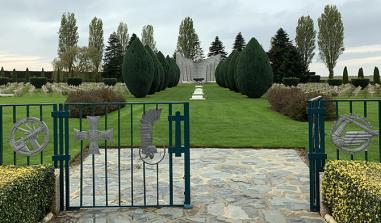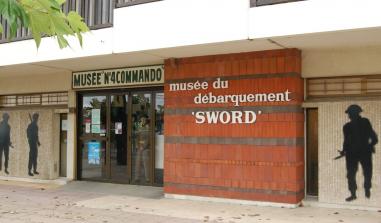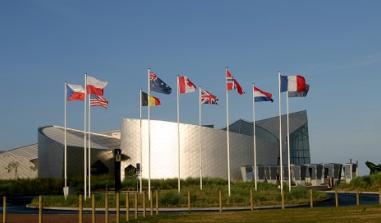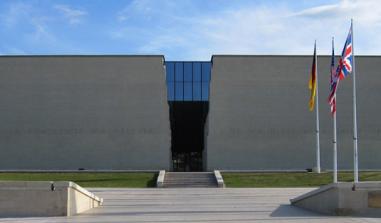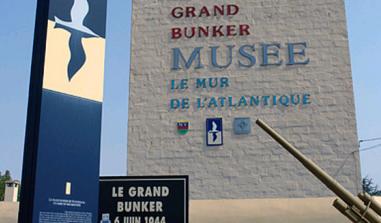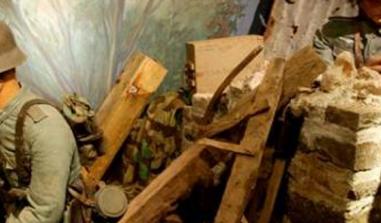Pegasus Bridge

Pegasus Bridge Photo: ©Yannick LE NEVE
On the "D"Day tourist route, don't miss the Bénouville Bridge, called "Pegasus Bridge" since 1944.
Because the Normandy landing memorial sites are well worth a detour, a tourist route dedicated to D-Day would not be complete without a visit to the site of Bénouville Bridge,called "Pegasus Bridge" since 1944. Installed in 1934, this lift bridge, just over thirty metres long and nearly seven metres wide, was at the cutting-edge of modernity of the time, as it was driven by an electric motor, the task of which was made easier by an impressive concrete counterweight.
In the night of 5 to 6 June 1944, three Horsa gliders from the British 6th airborne division, under the orders of Major Howard, landed in silence, just a few metres from Bénouville Bridge. Their insignia, a Pegasus, was the name given to the structure thence onwards.
The mission of the British 6th Airborne glider infantry was to seize the bridge. Along with the taking of the neighbouring Ranville bridge, the idea was to prevent German reinforcements from hitting the eastern side of the imminent landing.
In addition, cutting the artery between Caen and the sea would preserve a passage for later expansion of the Allied Beach Head. Armed by around fifty men, a 50 mm canon and a little bunker housing a machine gun, the German garrison defending the strategic structure was rapidly dominated by the first liberators on Normandy soil.
"Ham & jam, ham & jam": a few hours after the gliders arrived, this was the radio signal given to announce Major Howard's mission was a success. The commando still had to fight against enemy counter-attacks, notably by elements of the 21st Panzer.
It managed to keep its position and kept the bridge intact until back-up arrived on Sword Beach.
The meeting was finally achieved at around 1pm, with the famous bagpipes of Bill Millin, personal piper of Lord Lovat, playing in the background. Major Howard's parachutists, in control of the only points for crossing the two rivers between Caen and the Channel, made the first D-Day attack, which gave allied troops control of communications between the east and the west of the River Orne and its canal.
A symbolic site
Immortalised on screen in 1962 during the film The longest day, the first Normandy site under allied control still has many signs of the heroic actions that happened here and which preceded the Landing of 6 June 1944.
In 1960, Pegasus Bridge was extended by five metres following widening of the canal and was then replaced in 1993 by a new, wider and more modern structure. The new bridge is raised, like its glorious predecessor, and has reproductions of the old railing and wooden pathways from the time. In the centre of the site, visitors can still see the German anti-tank canon in its basin, the role of which was to defend access to the port.
Near the banks of the canal which the bridge spans is a path lined with a bronze bust of Major Howard and three stones mark the exact position of the three gliders. On the opposite bank is the first Normandy house liberated by the allied troops, which is in fact the famous Café Gondrée. In summer, the site puts on a sound and light show which stages the intermingled destinies of Bénouville Bridge and Major Howard's men.
Installed between the River Orne and the canal, the Pegasus Memorial was inaugurated on 4 June 2000 by the Prince of Wales and the French defence minister. In addition to the real Bénouville Bridge, which was reassembled after being taken town in 1993, the memorial has a "Bailey" bridge from 1944: named after a British engineer, these bridges could be assembled by forty sappers in less than three hours and were used to allow heavy military vehicles to pass.
Recently, the ministry of defence (general secretariat for administration; department of memory, heritage and archives) made a financial contribution to the installation of a life-size replica of a Horsa glider in the middle of the park around the memorial.
The permanent exhibition areas in the memorial give visitors the opportunity to see films of archives and showcases with an impressive collection of objects and documents to the glory of the British 6th airborne division: fragments of gliders from 1944, soldiers' equipment, Major Howard's personal objects and Bill Millin's bagpipes!
For young visitors and their teachers, the Pegasus memorial offers free of charge an educational file which traces a journey rich in emotions, thus emphasising the necessary orientation of memory actions to the younger generations.
Mémorial de Pegasus Bridge
Avenue du Major Howard 14860 Ranville
Tel. +33 (0)2.31.78.19.44.
Fax: +33 (0)2.31.78.19.42.
Email: memorial.pegasus@wanadoo.fr
Tours
The Pegasus Memorial is open every day, except in December and January. Guided tours (in French or English) are organised upon reservation.
Getting there
Five kilometres from Ouistreham, via the Ranville/Cabourg.exit
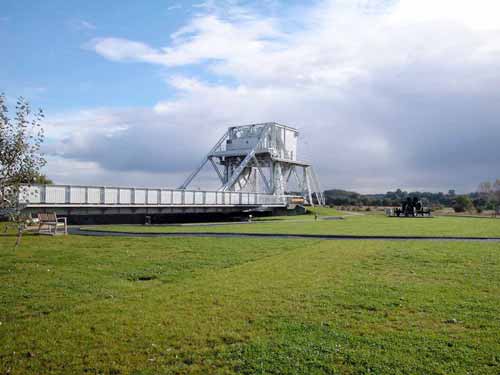
Le pont. Photo de Régis Hidalgo
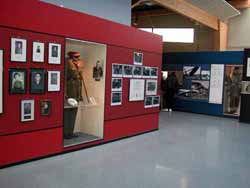
Le mémorial Pegasus. Photo de Régis Hidalgo Le mémorial Pegasus. Photo de Régis Hidalgo
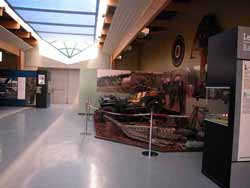
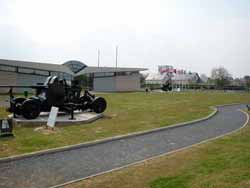
Le mémorial Pegasus. Photo de Régis Hidalgo Le mémorial Pegasus. Photo de Régis Hidalgo
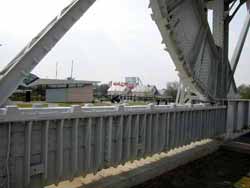
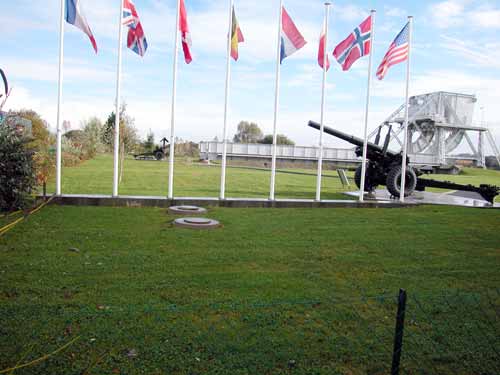
Le pont de Pegasus Bridge. Photo de Régis Hidalgo
Practical information
Place du commandant Kieffer 14860
ranville
02 31 78 19 44 01 43 25 29 67
Adultes: 6.00 € Enfants et étudiants: 4.50 € Groupes (à partir de 20 personnes) : 4,50 € Gratuit : Chauffeurs et guides accompagnant les groupes
tous les jours de février à novembre, de 10h à 17h


